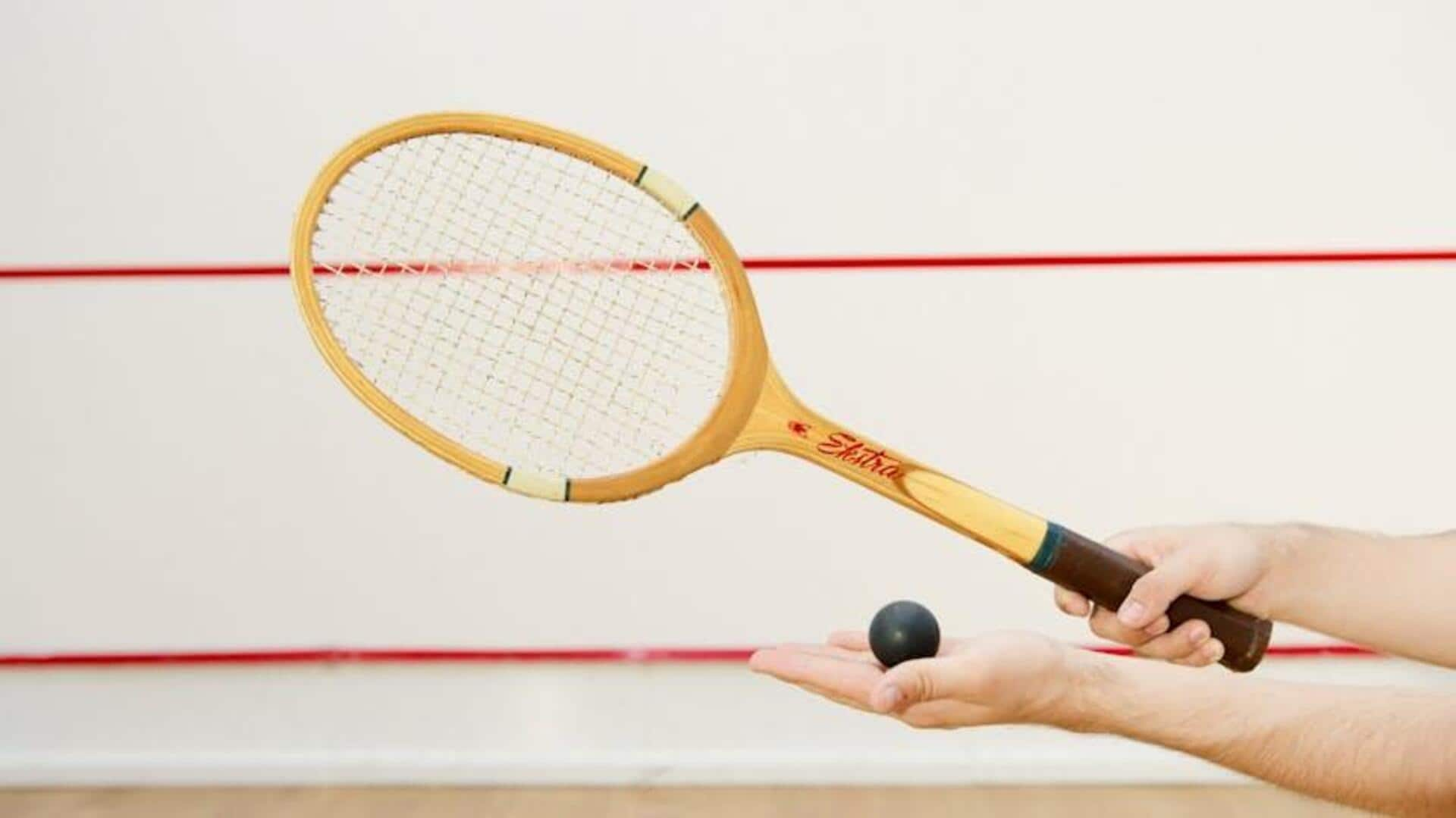
Looking for a high-intensity sport? Give squash a shot!
What's the story
Squash is a high-intensity sport that requires a combination of physical prowess and mental agility.
It's a fast-paced game of rapid reflexes, dynamic movements, and tactical thinking.
If you're looking to develop your agility, there's no better training ground than the squash court.
Read on to discover five ways to improve agility with squash. We'll focus on techniques and practices that are easily accessible to beginners.
Basics
Master the basic movements
To increase agility in squash, it's important to focus on perfecting the fundamental movements.
These involve lunging, side stepping, and pivoting quickly. By practicing these movements, you can build muscle memory and improve your reaction time during matches.
Novices should concentrate on proper form to avoid injuries and ensure optimal efficiency.
Plyometrics
Incorporate plyometric exercises
Plyometric exercises are great for building explosive strength and speed, which are crucial for agility in squash.
Adding exercises like jump squats, box jumps, and lunge jumps to your training routine can dramatically improve your ability to move rapidly across the court.
For best results, perform these exercises two to three times a week.
Footwork
Focus on footwork drills
Proper footwork is the key to agility in squash, allowing you to position yourself and maintain balance to strike the ball effectively.
Practicing drills that simulate match conditions, such as ghosting drills where you move to different corners of the court without a ball, can be extremely helpful.
These exercises improve anticipation and movement efficiency, making them an integral part of training for increased agility on the court.
Cardiovascular
Improve cardiovascular fitness
Agility isn't only about being fast on your feet; it's also about maintaining that quickness throughout the match.
By building cardiovascular fitness with exercises like running, cycling, or swimming, you can improve your endurance, helping you stay sharp and avoid fatigue during long rallies in squash games.
Try to get at least 30 minutes of moderate-intensity cardio exercise four days a week.
Practice matches
Play regular practice matches
One of the most effective ways to improve agility in squash is by playing regular practice matches.
This is because practice matches integrate all aspects of physical conditioning with the application of real-game strategies.
By competing in practice matches against opponents with diverse skill sets, players can pinpoint weaknesses while also adjusting their movement patterns to accommodate different playing styles.